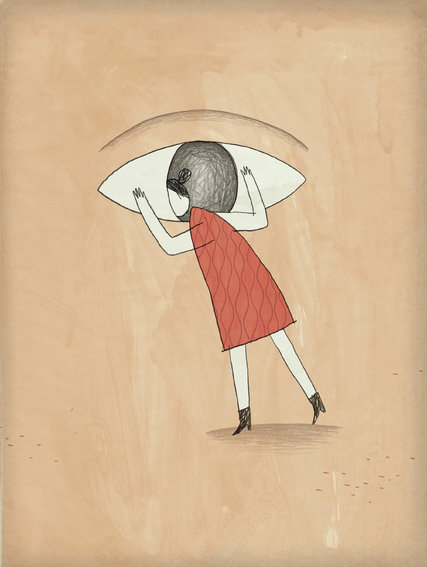Love is the mucillage that sticks the construction-paper pumpkins in the scrapbooks of our lives.
— David Mamet
What is love?
Baby, don’t hurt me
Don’t hurt me
No more.
–Haddaway
Valentine’s Day is a commercial bonanza second only to Christmas for the gift-giving industry. Businesses that sell flowers, chocolate, perfume, and greeting cards are busy and happy this time of year. For people who aren’t in romantic relationships, Valentine season can be excruciating, a taunting reminder of being left out of a central social ritual. Not everybody wants to be in a relationship. Plenty of people who are in relationships wish they weren’t. But most people experience at some time a deep, poignant, archetypal longing to have a Special Someone in their lives. I honor and respect that longing, and I treat it seriously when it shows up in conversations with friends and clients.
Lately there’s been a lot of conversation about an article that appeared in the Sunday New York Times’s popular Modern Love column called “To Fall in Love with Anyone, Do This.” Vancouver-based writing instructor Mandy Len Catron began her essay by saying, “More than 20 years ago, the psychologist Arthur Aron succeeded in making two strangers fall in love in his laboratory. Last summer, I applied his technique in my own life, which is how I found myself standing on a bridge at midnight, staring into a man’s eyes for exactly four minutes.” The method Aron crafted in order to generate love consisted of having two people answer a serious of increasingly personal questions (three sets of 12 questions) and then spend four minutes looking into each other’s eyes.

Catron reports that her own experience confirmed Aron’s findings, though she conducted the experiment not with a complete stranger but with someone with whom she already felt an attraction. “Much of Dr. Aron’s research focuses on creating interpersonal closeness. In particular, several studies investigate the ways we incorporate others into our sense of self. It’s easy to see how the questions encourage what they call ‘self-expansion.’ Saying things like, ‘I like your voice, your taste in beer, the way all your friends seem to admire you,’ makes certain positive qualities belonging to one person explicitly valuable to the other. It’s astounding, really, to hear what someone admires in you. I don’t know why we don’t go around thoughtfully complimenting one another all the time,” she writes.
“Most of us think about love as something that happens to us. We fall. We get crushed. But what I like about this study is how it assumes that love is an action. It assumes that what matters to my partner matters to me because we have at least three things in common, because we have close relationships with our mothers, and because he let me look at him.”
Catron’s article quickly went viral. In just a few weeks, a cottage industry has sprung up around The Questions. The Sunday after her column appeared, the Times noted that the article had generated more than 5.2 million visits to the page online, 365,000 shares on Facebook, and 745 comments on the Times website. The newspaper also published the complete list of The Questions Themselves. Inevitably, the following week the New Yorker published a parody of the questions, “To Fall Out of Love, Do This.” (“5. What’s your favorite song? No, it’s not. I’ve never once heard you listen to that song.”)

The online magazine Dame ran its own witty version. (“12. What would it take for you stop talking about the Paleo diet? 25. A nuclear bomb is detonated near your home, and you are slowly dying from radiation poisoning. Name the internal organ you’d like to keep functioning the longest.”) Last Sunday, the Modern Love column’s editor Daniel Jones wrote about the 36 Questions phenomenon, and the NY Times has even designed a smartphone app so you can conduct the experiment yourself.
Which I encourage you to do. Let me know how it goes. I probably won’t be going through the sequence myself. Personally, I love questions. I’ve spent most of my professional life asking questions, as a journalist and as a psychotherapist. And I also love being asked questions. Not everyone feels the same way. My sweetheart dreads it when I ask probing questions – he feels interrogated and fears that he will give the wrong answer and fail the test. When I asked one of my sisters why she didn’t call me more often, she confessed, “Because you ask difficult questions.” So I have come to understand that what I consider loving attention and genuine open-ended curiosity can come off as intrusive and demanding. There are, obviously, other ways of creating closeness and intimacy. Anything you do to reveal yourself to someone else, gradually and repeatedly, contributes to building trust and connection.
Eye contact is another ambiguous tool. It can be a great way to connect energetically but it can also feel threatening or challenging. I’m struck by how Catron’s article describes the closing extra-credit exercise of Aron’s experiment as “staring,” a word that seems to describe a hostile activity, something we’re taught as children to avoid. But I know from my experience teaching workshops about intimacy that no matter how careful I am to frame the experiment as “gazing into the other person’s eyes,” some people inevitably refer to it as “the staring exercise.”
Catron beautifully captures the vulnerability of the eye-gazing experiment: “I’ve skied steep slopes and hung from a rock face by a short length of rope, but staring into someone’s eyes for four silent minutes was one of the more thrilling and terrifying experiences of my life. I spent the first couple of minutes just trying to breathe properly. There was a lot of nervous smiling until, eventually, we settled in. I know the eyes are the windows to the soul or whatever, but the real crux of the moment was not just that I was really seeing someone, but that I was seeing someone really seeing me. Once I embraced the terror of this realization and gave it time to subside, I arrived somewhere unexpected. I felt brave, and in a state of wonder.”
Looking into someone’s eyes is an extremely brave activity. It’s never clear what you’re going to see looking back at you. Sometimes what gets mirrored back are your own harsh self-judgments or the scrutiny of a critical parent. It takes a lot of practice and presence to hold still long enough to witness the quality of acceptance in another person’s eyes. But that is the essence of intimacy – into-me-you-see.
My favorite meditation on this subject is Bobbie Louise Hawkins’s wonderful poem, “Take Love, For Instance”:
How can it be desirable, that flurry of feeling that if it continues and maintains intensity we call Love?
How perverse we are relative to our own good to have that in our feelings that from the age of thirteen or so, younger all the time they say, until seventy or whatever, no end to it they say, we give over or are given into the “divine emotion.”
Divine mix of anxiety, insecurity, longing that drives us until if we are fortunate, lucky in love, we have a brief relief that shines like fulfillment.
The constant fool’s miracle, like fool’s gold, but inherent; an inherent miracle. Passion brought to bear on eyes that shine back.
And then, or somewhat later, downhill all the way.
From here to there. Remember there.
Caught in the clutches of a one-way ticket. Express.We are poor.
We are poor.
There is nothing here.And we sling our everything into the void of it, to be caught.
What is that appetite that pretends to sustenance and ends with all the color gone from the day and no one funny anymore. The appetite that carries veils and obscures our memory.And can you in that moment’s tender voice say No to it? How mean to refuse it, this little miracle that does so want in. Feel it knocking at your heart.
Poor heart.
See what followed me home.
Can I keep it?